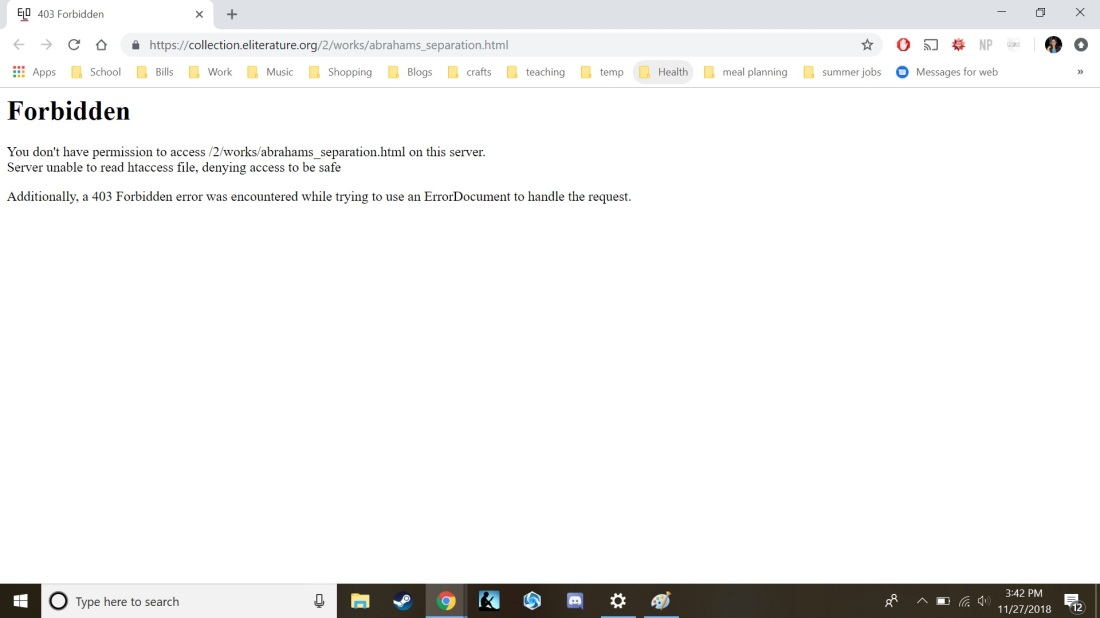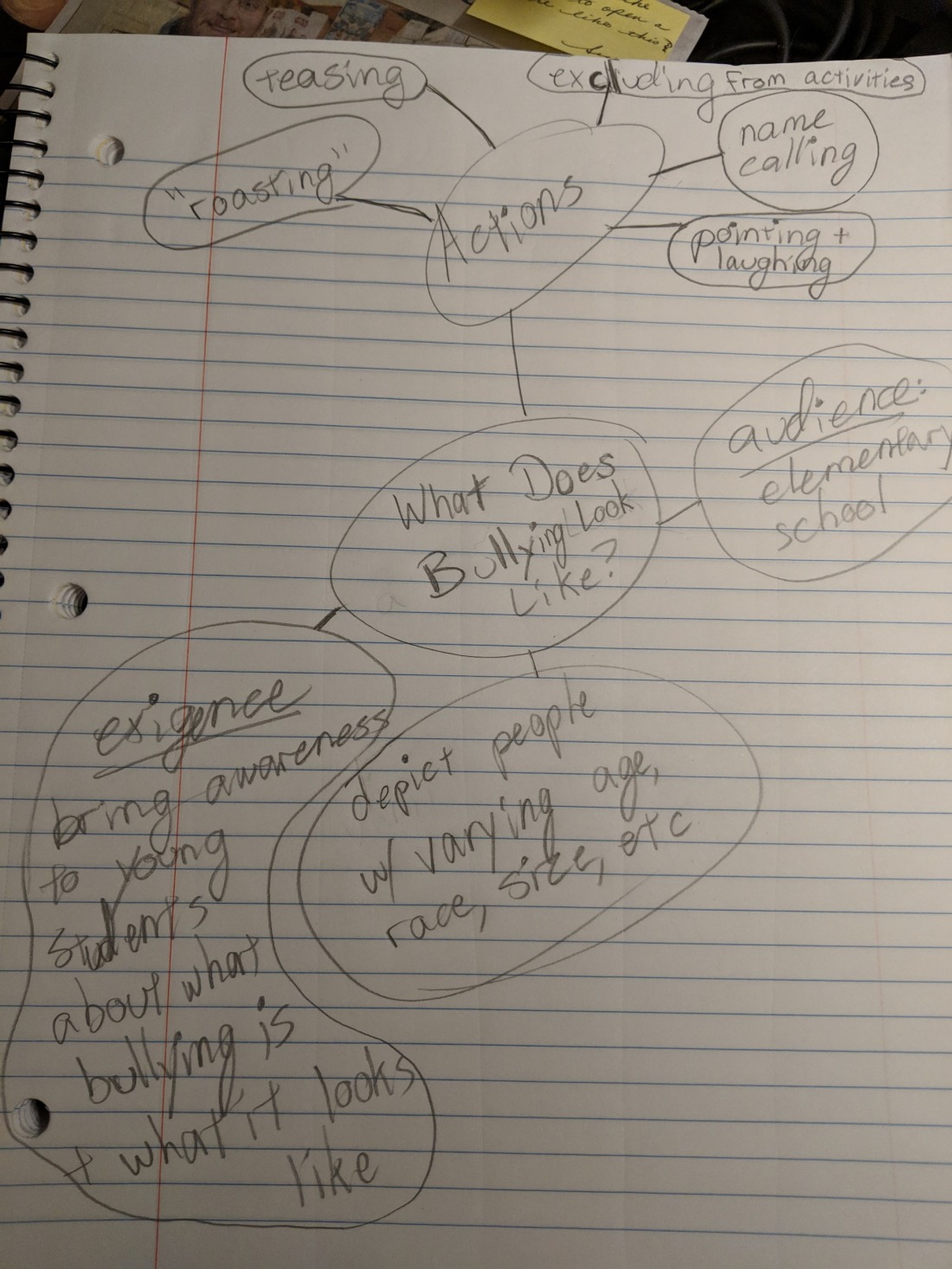Book and Volume was created by Nick Montfort in 2005. This piece is unique because the audience really takes on partial role of writer by giving commands to move the story along. Although the outcome of the story seems to be the same, the path that each reader takes to get there will be different.
This story begins in a dream. The main character, for whom the reader will choose a name at a later point in the story, dreams of being back in school, almost missing the bus, and his mother crawling through the window. He or she then dreams of a sluggish window summoned by a mouse click.
I searched for meaning of these types of dreams on various dream websites. Dreams of being back in school could mean that there is a lesson that you learned in school that you may need to remember. It could mean that you need to learn something in that particular dream. Lastly, it could mean that there is an opportunity to learn something in life that the dream is bringing to your attention. [https://www.dreamscloud.com/en/dream-dictionary/symbol/school]
Dreams of missing the bus could mean that you need to slow down in your waking world. This story, for example, BEGINS taking place at 9:05pm, after the main character takes a short nap. Therefore, there is a good possibility this was the author’s intention for that aspect of the dream. However, dreams about missing the bus could also mean someone is paying so much attention to details that they are missing out on other aspects of their lives. [https://www.auntyflo.com/dream-dictionary/missed-bus]
Dream-meaning.net desribes dreams of a person’s self climbing through the window, but not a family member, such as the mother. When a person dreams of climbing through a window it is said that they are creating their own windows of opportunity, but they wish to keep their endeavors secret until a later time. One could speculate that if a person’s own mother is climbing through the window, maybe she is the one providing the opportunity. However, I am not sure how this translates into Book and Volume because there is no mother in the story. However, the idea of opportunities being opened up is a very real possibility.
The last part of the main character’s dream is a, “Sluggish window summoned by a mouse click.” To me, this part of the dream seems to have moved beyond deep sleep, and into that half-awake phase. The character is not facing an open computer, so it is unlikely that he or she is looking at his or her own computer. Therefore, this part of the dream signals to the reader that the main character is about to wake up.
At this point in the story the main character is revealed to be a System Administrator for nWare, who lives in nTopia. The main character, whom the reader still has not named, looks up at the constellations on the ceiling of Pisces, Cetus, Aquarius, and other constellations “without celestial referent.” The main character decides to call these unnamed constellations The Cradle, The Way, and The Burning Book.

Pisces is the fishes constellation. “The two celestial fish represent Venus and Cupid in Roman mythology, who transformed themselves into fish in order to escape the monster Typhoon” (constellation-guide.com/).

Cetus is the whale constellation. Cetus was the sea monster in the Greek myth about Andromeda. “In the myth the princess was sacrificed to the monster as punishment for her mother Cassiopeia’s boastfulness” (constellation-guide.com).

Aquarius is the constellation whose name means “the water-bearer” or “cup-bearer” in Latin. Aquarius lies in the part of the sky known as “the Sea” because many of it’s constellations bear names related to sea life (constellation-guide.com). The fast that all of these constellations are related has significance later in the story, as we will explore.
As the reader lies awake looking at the constellations, they are reminded that the pager still requires attention. This is where the interactive part of the story really begins to take place. If the reader attempts to check the pager immediately, he or she is informed that it’s too dark to see anything. This is when the reader realizes that he or she must give very basic instructions in very basic steps to this computer program telling a story.
Only until he or she has turned on the light will he or she be able to look at the pager. The story itself gives clues as to what directions are able to be used for the next moves. The story describes a set of buttons on the pager, and the reader types in what direction they will give next, which is to press the button on the pager. Directions given in the story follows this format throughout. If the reader does not pick up on the clues to the next direction, the object that needs attention will become more and more obvious. The reader finds the first example of this if they do not answer the pager quickly enough. The buzzing and vibrating gets louder; the print becomes capital and bold. If the reader tries to enter a command that is not available, the story will give a default message about the option not being available yet.
After the reader answers the pager, a message is displayed about servers needing to be reset in a hurry. The reader may try to power on the laptop that is available to check the email, but the option will not be available until you open the laptop. When the reader does so, they finally get to give themselves a name as a character in the story.
The next task will be to walk around town to reset all five servers. The reader will most likely want to draw themselves a map, as I have done here. It is very easy to get lost without it.

As the reader walks around town, there are a couple of interesting points to note. One is that the streets are either numbered, or given the name of some sort of fish. This made me wonder if the aquatic constellations in the beginning of the story somehow have a connection to the aquatic street names. The second point of note is that the scenes and objects that the reader encounters on the walk are completely bizarre. For example:
- “Two men on unicycles, the larger one with a third unicycle over his shoulder, wobble along the street and away.”
- “Carrie Fisher seems to go out of tune for a moment. Quite suddenly, she’s wearing a slave-girl costume and looking rather surprised.”
- “An enormous but rather well-behaved gorilla strides to the middle of th area, brandishing what looks like a giant can of Jolt Cola.”
There is also a but which I did not write down and therefore cannot directly quote about Leonard Nemoy looking at you after you have reset one of the servers.
I am sad to say that after resetting the servers I became stuck. There was a point where I was told a very critical internal intensive update had been issued, which I would have to download, compile, and then apply it to all five servers. The story originally states the update will take ten minutes to download and four hours to compile. However, the story then says that was an exaggeration, “It will probably take eight minutes to download and maybe two and a half hours to compile.” After this point is when I became stuck.
My theory about this work, even though I did not get a chance to finish, is that the main character is actually still asleep. Remember the dream about the mom crawling through the window? The main character actually never woke up. I feel like everything from the first time the buzzer rang has been a dream. This would explain the mysterious figures floating around town, as well as the need to download an update that would take four-no-wait-two-and-a-half hours to complete. It would also explain the main characters dream about working too much. Am I right? What do you think? Have you completed the entire map?
~ Sara Faulkner
#elitclass







